The National Electrical Code Section (A) Working Space states in part, "Working space for equipment operating at 600 volts, nominal, or less to ground and likely to require examination, adjustment, servicing, or maintenance while energized" Transformers are not meant to be worked on while energized, thereforeNEC and 29 CFR (g)(1) require sufficient access and working space around electric equipment to allow ready and safe operation and maintenance of such an equipment Both the OSHA and NEC set minimums for the dimensions of this working spaceNEC Requires access and working space be provided about all electrical equipment to permit ready and safe operation and maintenance of such equipment Our current staff consensus and State historical position is that a removable barrier meets the intent of the requirement in NEC
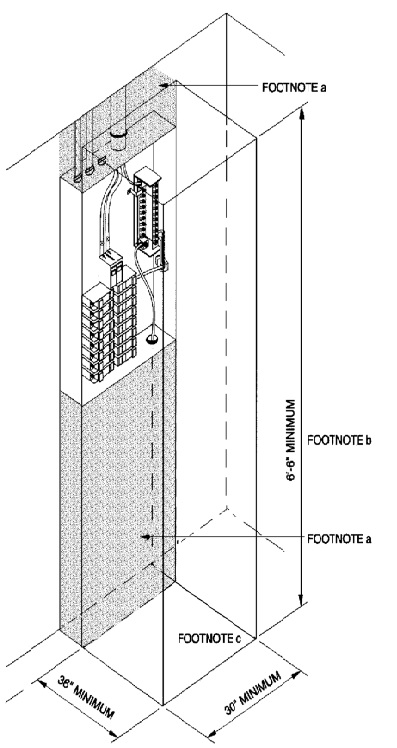
15 Virginia Residential Code Icc Digital Codes
Nec 110.26 working space
Nec 110.26 working space-___ NEC (A) – The working space about electrical service panel/subpanel shall be at least 3 ft in front of the electrical panel The width of the working space shall be 30" or greater, and the height of the space shall extend from the floor to 6 1/2 The definitions of "exposed (as applied to live parts)" and "live parts" in Article 100 leads me to believe that the contacts of the receptacle would cause this installation to fall under Table (A) (1), Condition 3, requiring the depth of the working space to be 4'0" However, an associate has argued that because the 1V convenience
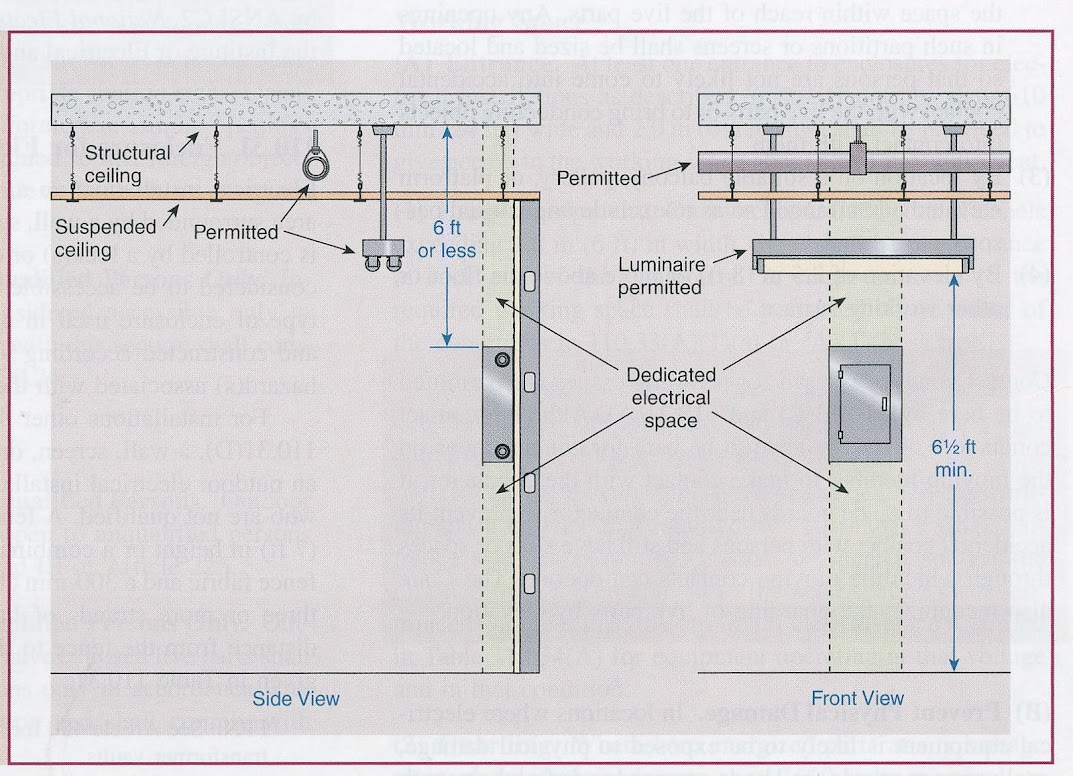



Inspectionnews Home Inspection
Calculations for service equipment (NEC );Indoor installations shall comply with (E) (1)(a) through (E)(1)(d) (a) Dedicated Electrical Space The space equal to the width and depth of the equipment and extending from the floor to a height of 18 m (6 ft) above the equipment or to the structural ceiling, whi chever is lower, shall be dedicated to the electrical installation The second document also makes a point that the OEM may indicate that a minimum clearance is required to service the equipment, and the OEM minimum clearance can be wider then the isle way requirement Fred RE NEC Working Clearance che (Electrical) 7 FacEngrPE (Mechanical)7
Also, storage is not allowed in the required working space, per NEC (B), the panel door must swing open a minimum of 90º, per NEC (A)(2), a panel cannot be located in a clothes closet, bathroom, or on stairs, per NEC (D,E,F), and the area in front of the panel must be illuminated, per (D)Egress and working space for rooms containing electrical overcurrent devices, switching devices, or control devices shall be in compliance with the International Fire Code and Section of NFPA 70 Background 15 IFC 6053 Working space and clearance A working space ofnot less than 30 inches (762 mm) in width, 36The purpose for the National Electrical Code is to provide a safe installation, but Article 110 is perhaps focused a little more on providing an installation that is safe for the installer and maintenance electrician, so time spent in
There are also several other location considerations The panel must have a clear working space in front of it that is 25 feet (30") wide, 3 feet (36") deep, and 65 feet (78") high NEC (A)(1&2) The 25 foot width in front of the panel does not have to be centered Only qualified electricians are permitted to perform maintenance work NEC article (A) ( 1) condition 3 states that exposed live parts on both sides of the working space require minimum clear distance of 4ft NEC does not explain the dead front panel working space requirements between panelsIn the NEC, working space requirements are found primarily in Article 110 NEC applies to electrical equipment operating at 600 volts or less The primary requirement is that both access and working space must be provided and maintained for all electrical equipment (Photo 1)




Nec 110 26 Working Space Exemptions Jobs Ecityworks




Afpm Summit Nec Revision Reduced Risk For Electrical Workers
See posts, photos and more on FacebookVisit http//wwwMikeHoltcom/14code to explore Mike's complete range of 14 NEC training products For over 35 years Mike Holt Enterprises has specializedThat is, some of the requirements are applicable only where the equipment "is likely to require examination, adjustment, servicing, or maintenance while energized" (A) Working Space




Electrical Panel Equipment Working Space Clearance Distances U S Nec Article 110 26




Working Space Requirements For Electrical Panelboards Iaei Magazine
Status Not open for further replies E Eng Member #1 I have a situation where the RTU was installed too close to the edge of the roof This is causing the building inspector to required a guard rail beThe National Electrical Code® (NEC)® Section requires adequate working space for all electrical equipment NEC Section (A) requires a clear space at least 30 inches wide and 36 inches deep if the equipment is likely to be worked on while energizedArticle 110 in the National Electrical Code (NEC) covers general requirements for the examination and approval, installation and use, access to and spaces ab




15 Virginia Residential Code Icc Digital Codes




Working Space About Electrical Equipment Nec 14 110 26 23min sec Youtube
Work Space and Guarding The requirements of are conditional, just like the requirements in ;However, the language in and (A) needs special evaluation and careful consideration when working on Answer No The National Electrical Code Section (A) Working Space states in part, "Working space for equipment operating at 600 volts, nominal, or less to ground and likely to require examination, adjustment, servicing, or maintenance while energized " Transformers are not meant to be worked on while energized, therefore the work




Electrical Panel Working Space Access The Garage Journal



2
In the case of the NEC, sufficient means you must meet certain depth, width, and height requirements as outlined in Let's begin our discussion The safety of maintenance electricians depends on the consideration of adequate workspace around electrical equipmentThe wording of the article (and the commentary in the NEC Handbook) definitely seems to suggest that vfd's require working space However, the electrical inspector is allowing them to be buried behind the motors and pumpsArticle 110 sets the stage for how you'll implement the rest of the NEC This article contains a few of the most important and yet neglected parts of the Code For example in accordance with industry accepted safe work practice standards Note 1 NFPA 70E, Standard for Electrical Safety in the Workplace, pro
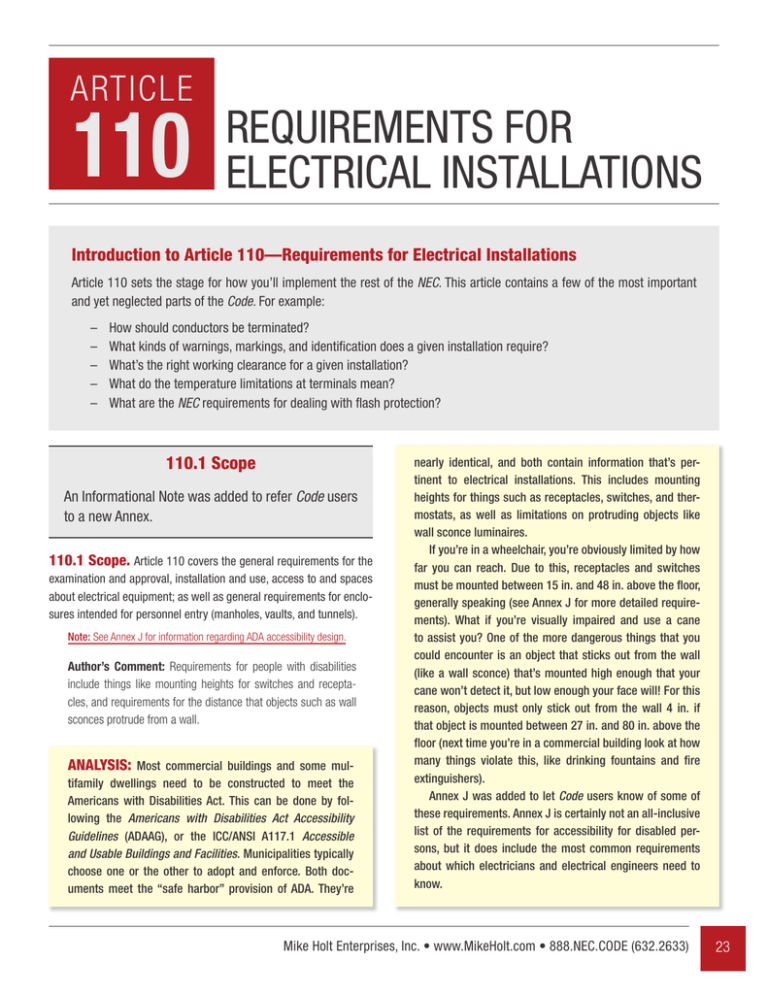



Sample Pages
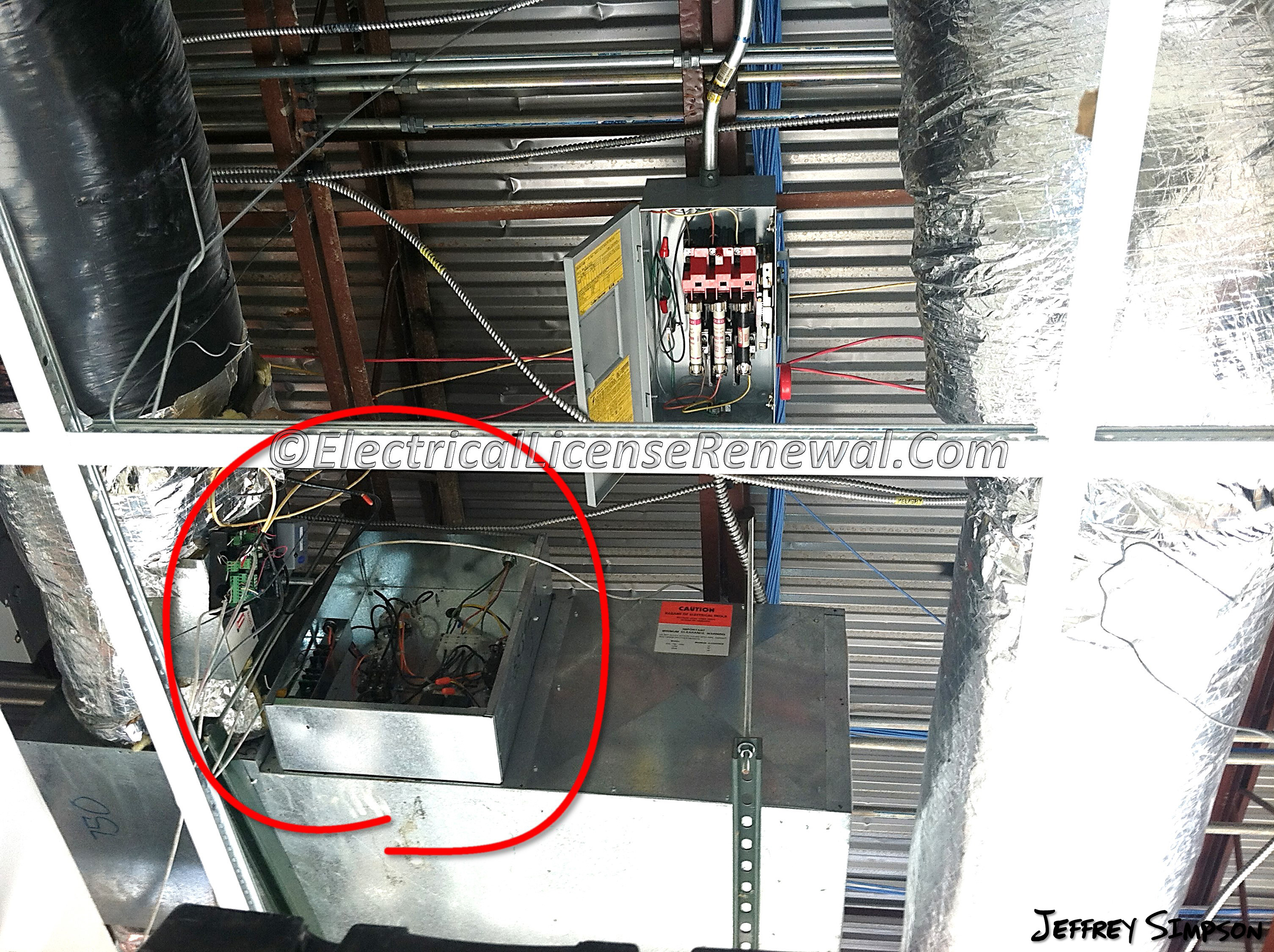



110 26 A 4 Limited Access
How Much Working Space Is Enough? The clear working space that is required by the first sentence as described in (A) may be eliminated only where examination, adjustment, servicing and maintenance are not "likely" to occur when energized exposed live parts, etc, are present" Code Violation NEC (A) 3 Height of Working Space Has to be 65 feet minimum or at least as high as the equipment "The work space shall be clear and extend from the grade, floor, or platform to a height of m (61/2 ft) or the height of the equipment" NATIONAL ELECTRICAL CODE, 14 Edition
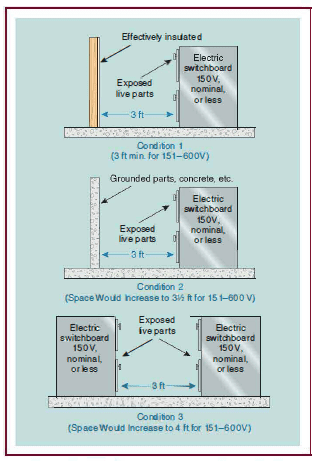



Where Can Panelboards And Load Centers Be Located In My Building Wgi
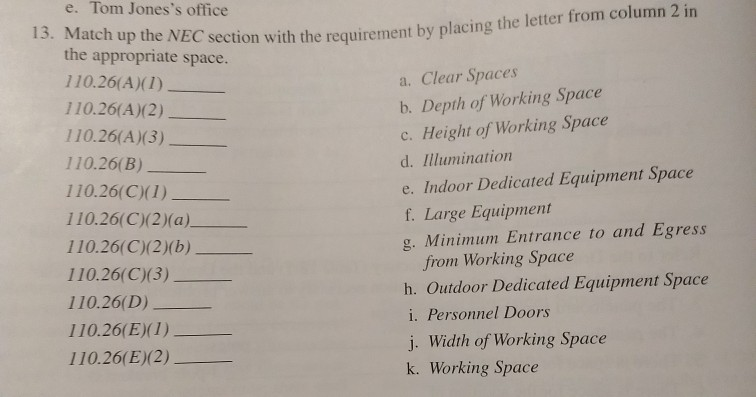



Solved E Tom Jones S Office 13 Match Up The Nec Se Ction Chegg Com
The minimum width of the working space is 30 in or the width of the equipment, whichever is greater, and all doors or panels must be able to open to 90 degrees or more This is the same as the general requirement found in (A)(2) NEC NEC Working space clearances NEC Working space clearances Thread starter Eng; Clearances and working space around electrical equipment are necessary to provide a safe working environment for electrical professionals The rules that are in place to ensure this space is available are often misunderstood Be sure you understand these requirements as we discuss Part II of Article 110 in the NEC;



Nec 110 26
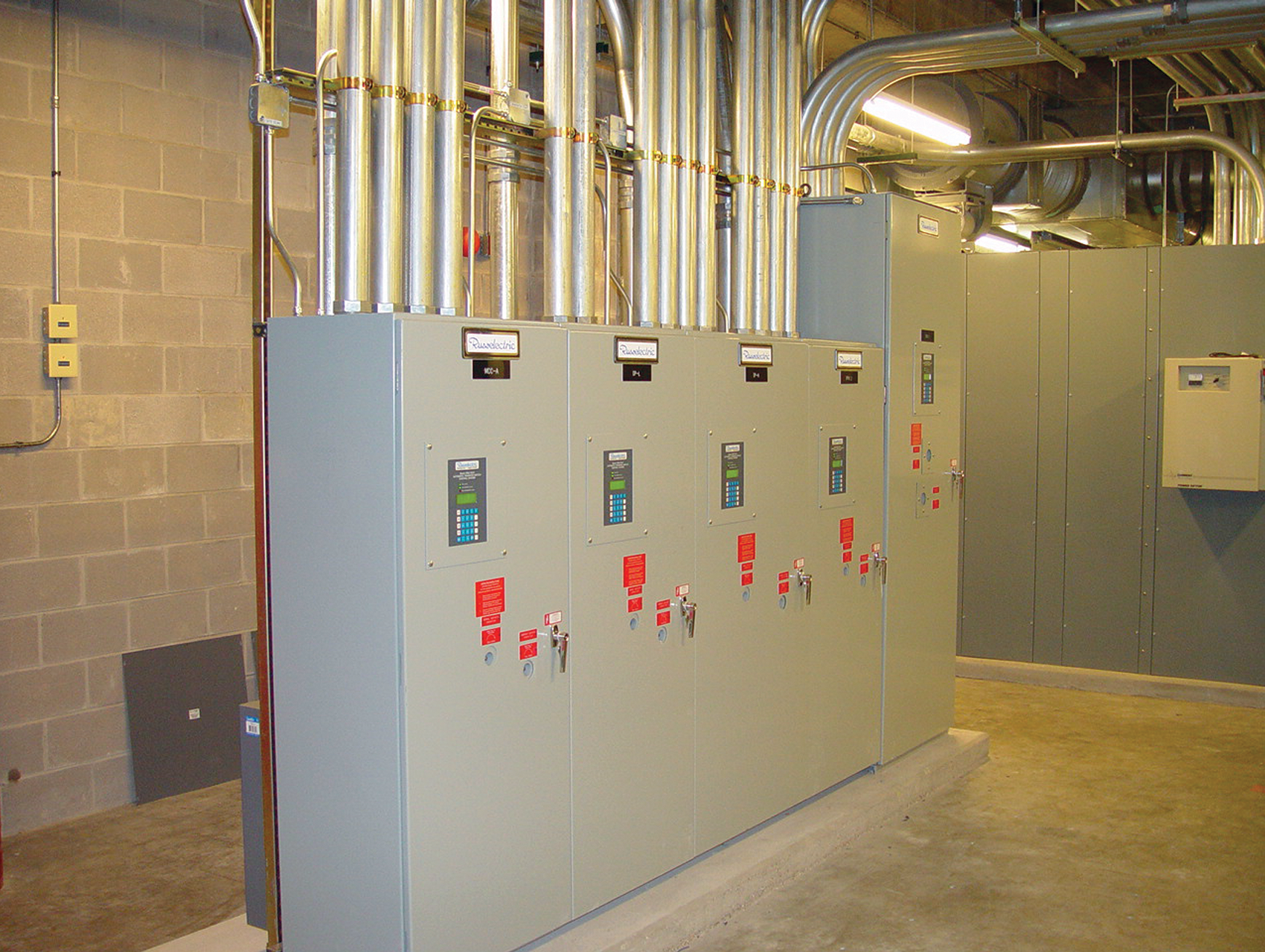



Working Space For Electrical Equipment Iaei Magazine
Sections (A)(3), (E) and (D) require proper headroom space and illumination for the working space in and around service equipment, switchboards, panelboards and motor control centers These are in addition to requirements outlined in (A)(1) through (A)(3) The National Electrical Code ® (NEC)® Section requires adequate working space for all electrical equipmentNEC Section (A) requires a clear space at least 30 inches wide and 36 inches deep if the equipment is likely to be worked on while energizedArticle (A)(2)—Specifies that the width of the working space in front of the electrical equipment shall be the width of the equipment or 30 inches (762 mm), whichever is greater The goal is to prevent a worker from being unduly crowded when testing or maintaining equipment The width of the working space is a factor regarding worker
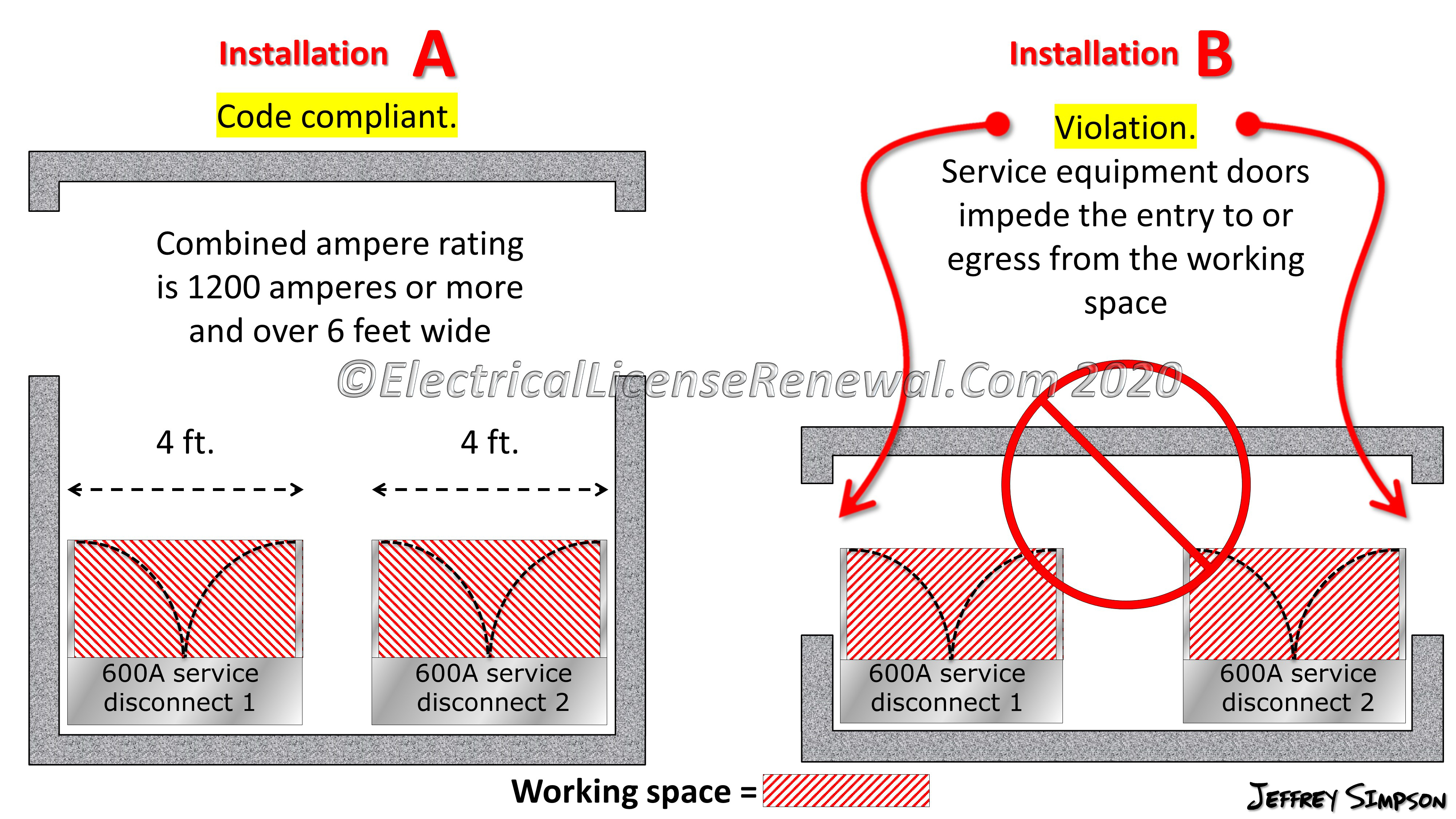



110 26 C 2 Large Equipment




Nec 110 26 Working Space Exemptions Jobs Ecityworks
The national electric code • nec • adopted by the louisiana legislature as law • not a design manual • is a minimum standard nec article working space shall be provided and maintained about all electric equipment likely to require while energized working space shall be The working space is defined in all three dimensions depth, width, and height Some of the working space requirements found in Section (NEC05) include (A) Working Space Working space for equipment operating at 600 volts, nominal, or less to ground and likely to require examination, adjustment, servicing, or maintenance whileDoes (A) apply to variable frequency drives controlling hvac related pumps?



Working Clearance Electrician Talk




Code Changes Ryan Jackson Electrical Training Facebook
The requirements in (A)(1) through (A)(3) of the National Electrical Code (NEC) deal with Codeprescribed "working space" at electrical equipment—requirements that in most instances are considered by designers, installers and inspectors as eyeball situations;Greetings Mr Design Engineer, Thank you for submitting your question with regards to the proper application of section (2)(a) as it pertains to establishing a compliant and safe single entrance to and egress from large electrical equipment rated 10 amps or more and over 6 feet wide that contain overcurrent devices, or control devices, or switching devicesReference National Electrical Code (NEC) Table (A)(1)) Condition 1—Exposed live parts on one side of the working space and no live or grounded parts, including concrete, brick, or tile walls are on the other side of the working space Condition 2—Exposed live parts on one side of the working space and grounded parts, including




Working Space About Electrical Equipment 110 26 Nec



2
Provide sufficient working spaces and clearances for batteries Working space shall be measured from the edge of the battery cabinet, racks, or trays, (NEC 4809, ) Spaces about the ESS shall comply with NEC Working space shall be measured from the edge of the ESS modules, battery cabinets, racks, or trays, (NEC ) NEC requires working clearance in front of equipment likely to require calibration, testing, or adjustment while energized This means a 30 by 36 inch space (or larger) in front of panels, access panels on HVAC equipment and fused disconnects If you have a room that meets the above requirements, (2) states that these electrical rooms must have an entrance/egress that is at least 24 inches wide and 65 feet tall at EACH end of the working space Working space requirements appear in Table (A)(1)




Nec Working Clearance Youtube




Solved 13 Match Up The Nec Section With The Requirement By Chegg Com
People often want to reduce working space in a misguided effort to maximize revenue per square foot The reality is that you maximize revenue per square foot only when you allow enough space for efficient operation, maintenance, and repair Mike HoltIndustrial control panels (NEC For the depth of the working space we will again refer to Table (A)(1) and base it on the voltage to ground and the conditions specified to determine the distance required, and all enclosure doors or hinged panels must be able to open at least 90 degrees The last Working space for equipment shall be provided and maintained per subsection (A) to permit ready and safe operation of such equipment The placement of bollards within working space, even if they are removable is prohibited, since they don't permit ready access to the equipment Section 1102(B) (8/3/17)



2




Dedicated Equipment Space Nec 110 26 E 1 And E 2 Part 1 Of 3 Youtube
As outlined in NEC Table (A),these are Condition 1 When there are (i) exposed live parts on only one side of the working space, (ii) grounded live parts on the other side of the working space, or (iii) when both sides of the working space are sufficiently insulated Requires 3 8 ft depending on voltage from 1001V to above 75 kV



Art109
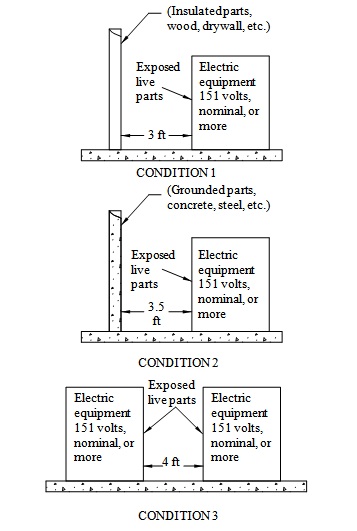



Consulting Specifying Engineer Integrated Design Of Electrical Rooms
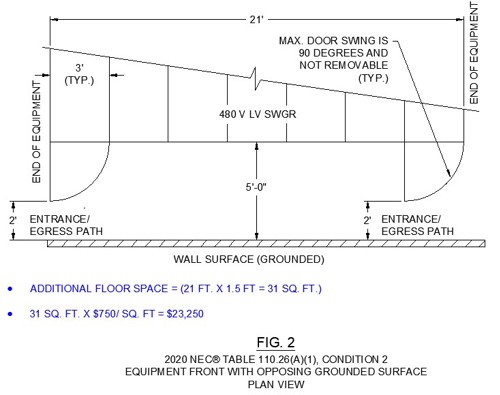



Afpm Summit Nec Revision Reduced Risk For Electrical Workers



1




Current Affairs Keep In The Clear
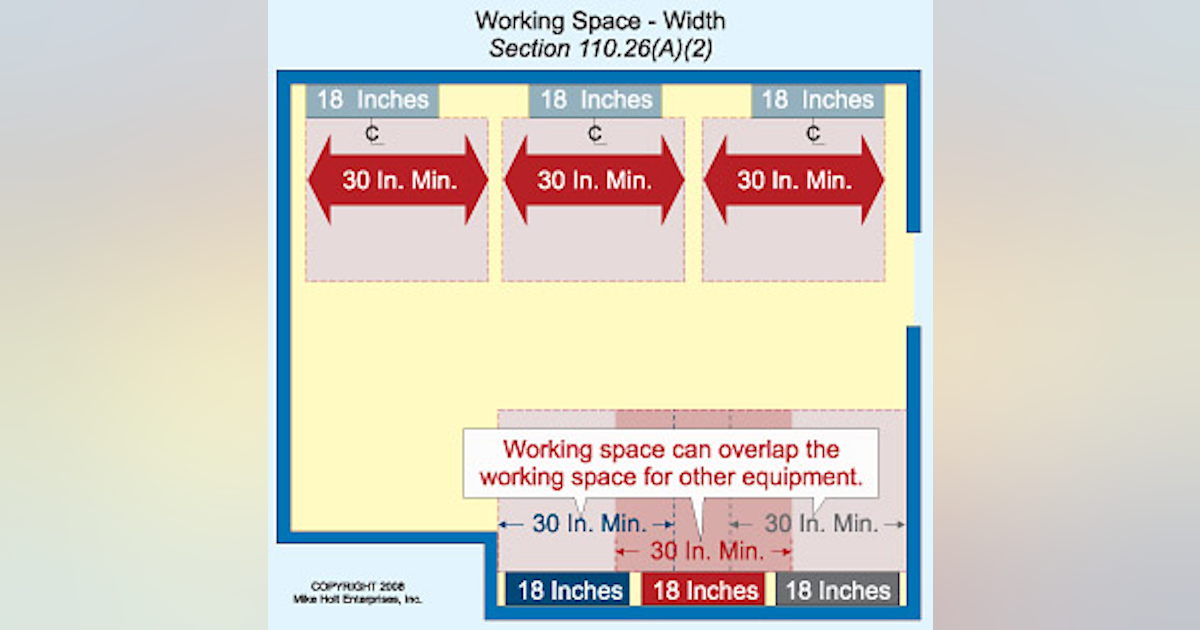



How Much Working Space Is Enough Ec M



Nfpa 70e Electrical Panel Clearance
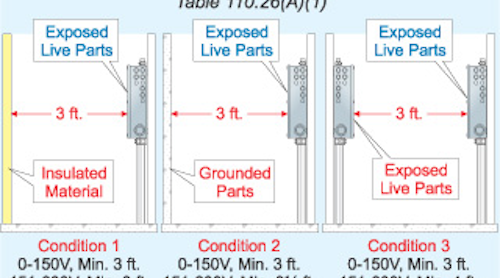



Adequate Workspace Keeps Electricians Safe Ec M
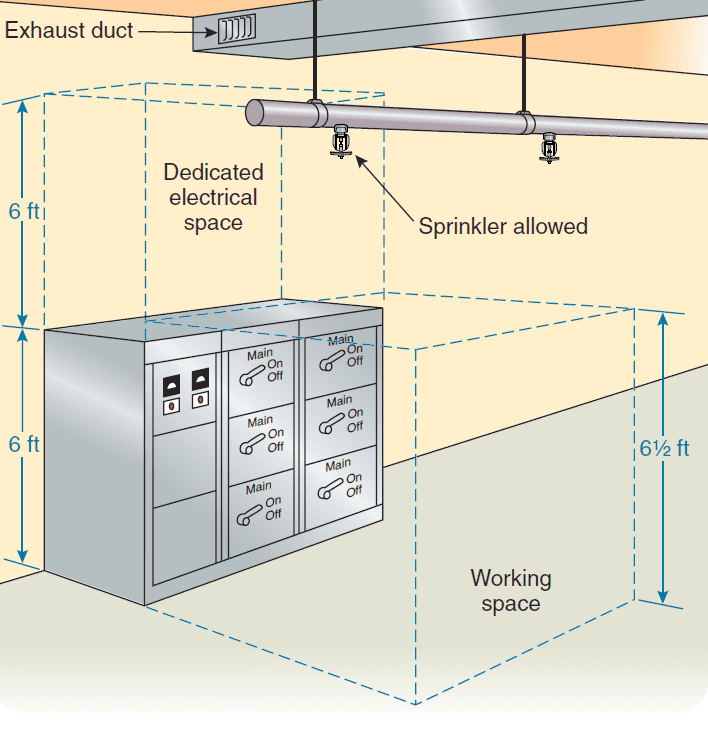



Where Can Panelboards And Load Centers Be Located In My Building Wgi



2




Code Changes Ryan Jackson Electrical Training Facebook




Working Space Requirements For Electrical Panelboards Iaei Magazine




Working Space Requirements For Electrical Panelboards Iaei Magazine
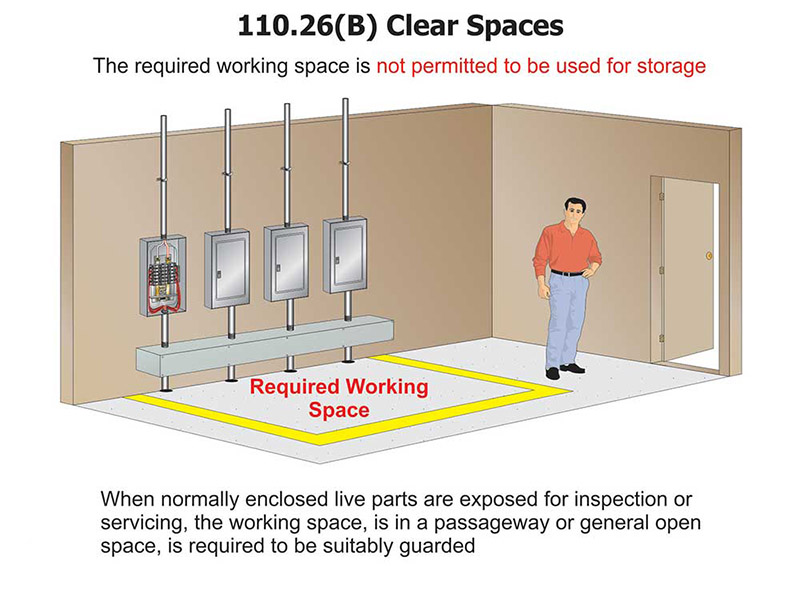



Working Space Requirements For Electrical Panelboards Iaei Magazine



Subpanel Working Clearance Contractor Talk Professional Construction And Remodeling Forum
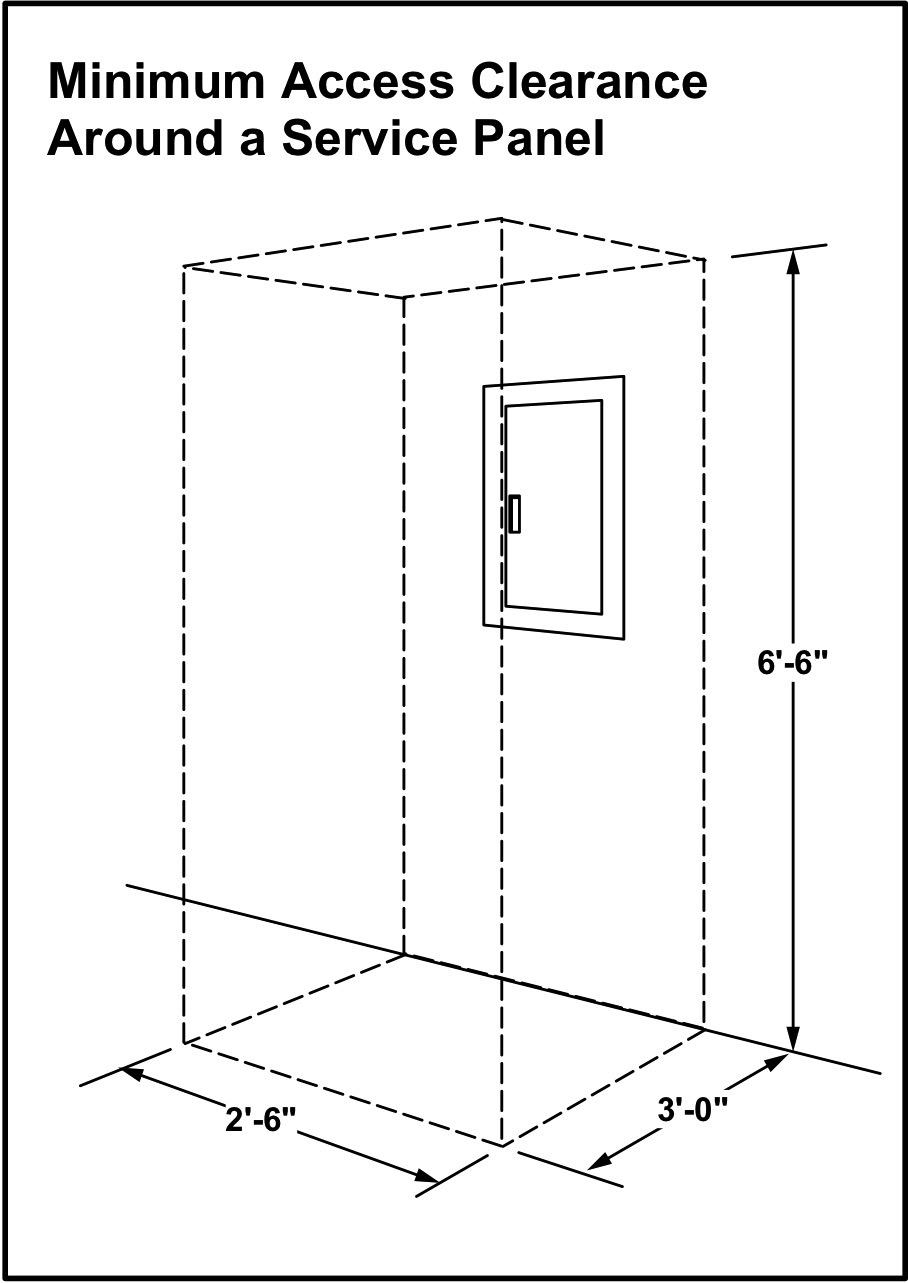



When Did The Requirement For Clearance In Front Of An Electrical Panel Become Code




Entrances To And From Electrical Equipment Rooms Pdf Free Download




Inspectionnews Home Inspection



2




Proposed Changes Revisions To The 17 National Electrical Code C




Working Space Requirements For Electrical Panelboards Iaei Magazine




Doe Handbook Electrical Safety General Requirements Rf Cafe




General Installation Requirements Part Xxxiii Electrical Contractor Magazine




تخته سفید 14 Nec Working Space About Electrical Equipment 110 26 23min 21sec




Table 110 26 A 1 Classes4contractors




How Much Working Space Is Enough Ec M
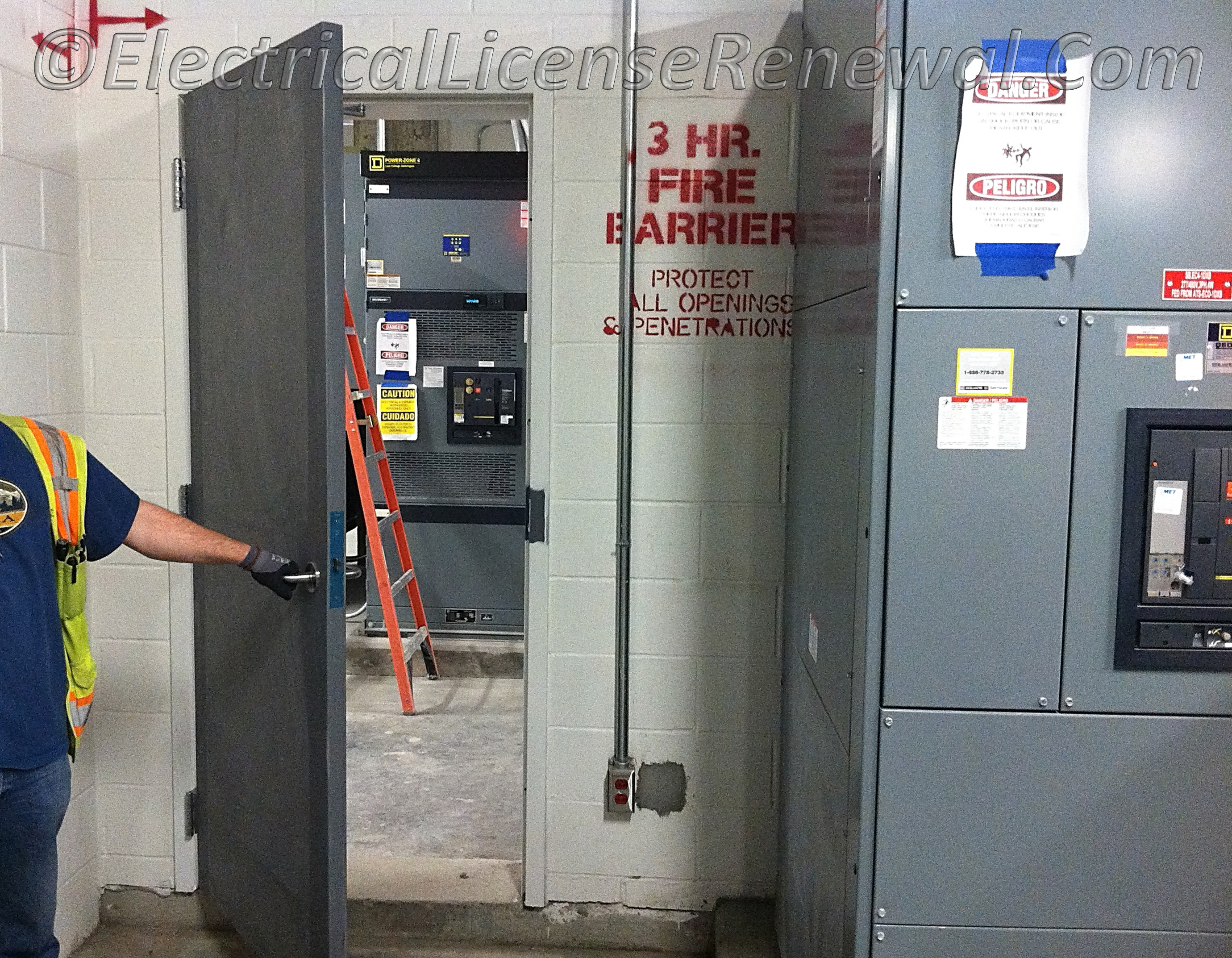



110 26 C 3 Entrance To And Egress From Working Space Personnel Doors




General Installation Requirements Part Xxxiii Electrical Contractor Magazine
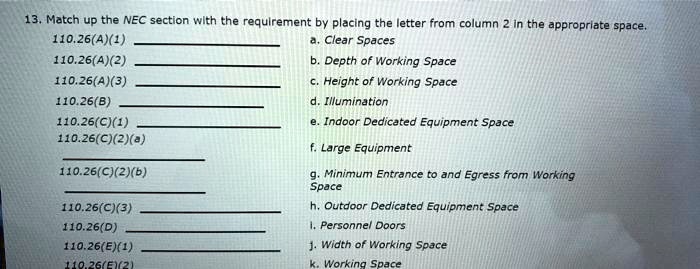



7lryfmhw8jcsdm
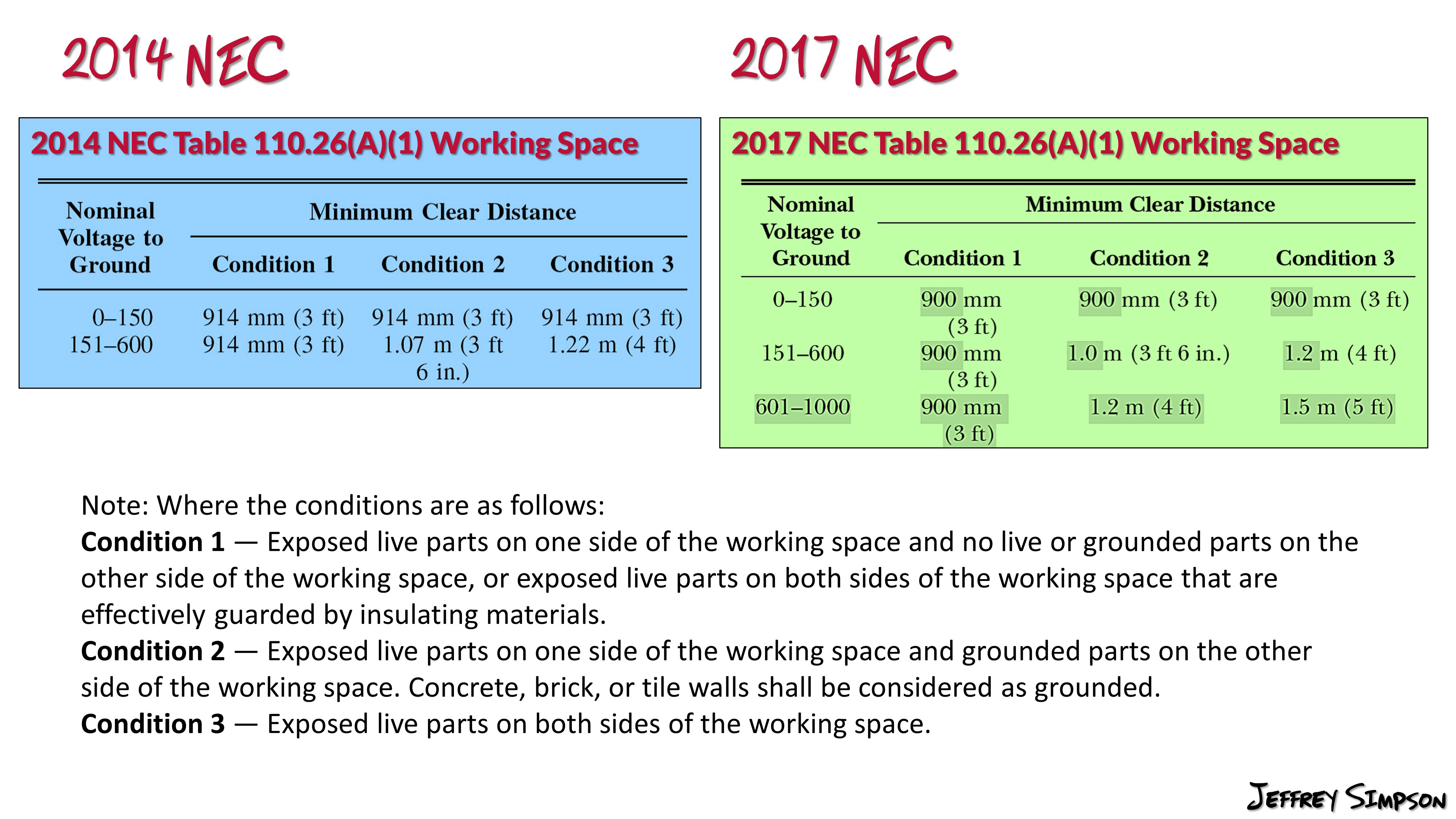



Table 110 26 A 1 Working Spaces



2
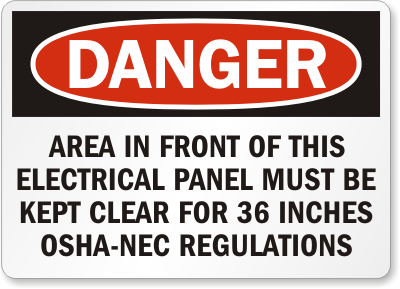



Electrical Panel Clearance And New Nec Requirements Safteng
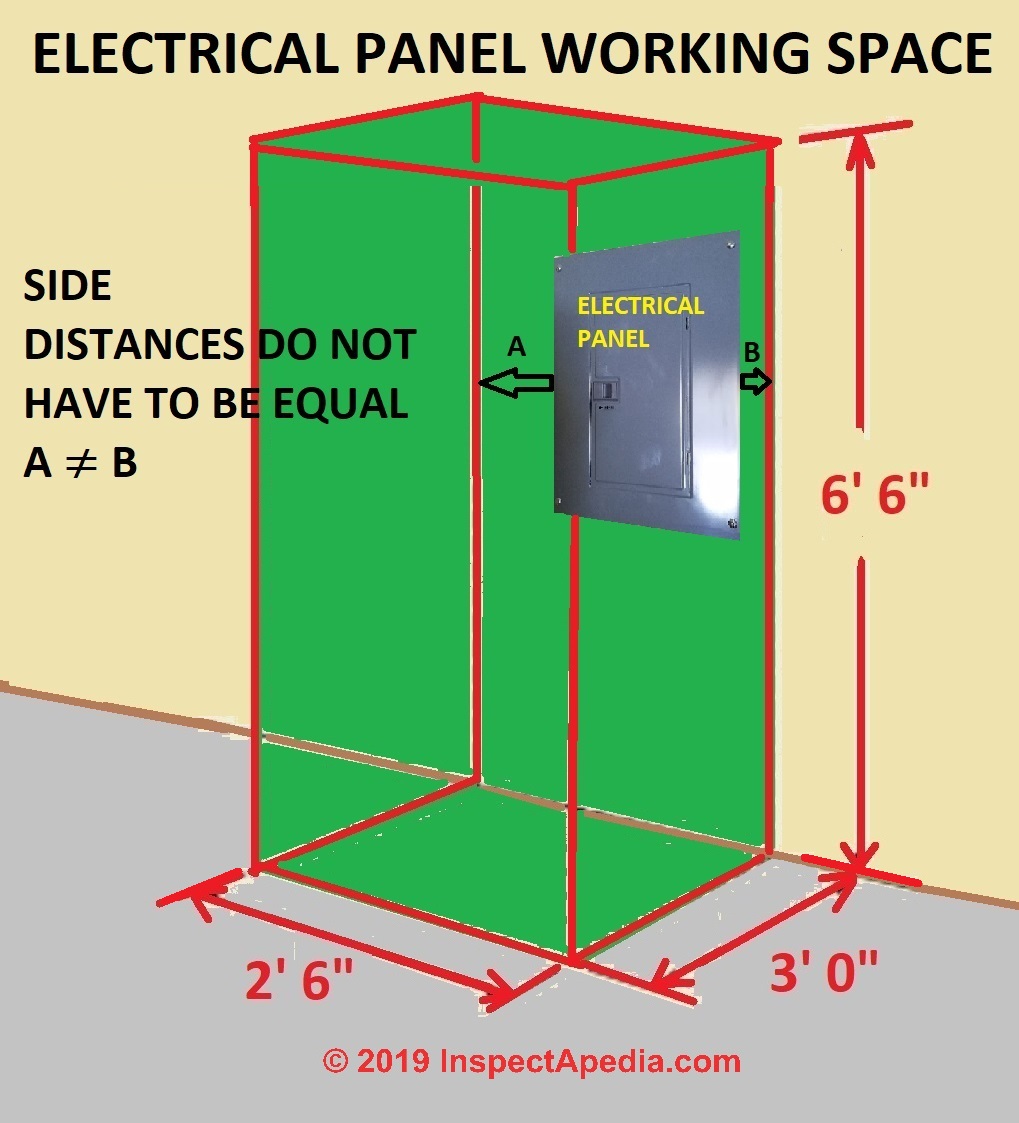



Electrical Panel Equipment Working Space Clearance Distances U S Nec Article 110 26




Spaces About Electrical Equipment Nec Violation Example Carelient



2




Working Space For Electrical Equipment Iaei Magazine



2



Working Space About Electrical Equipment 110 26 Nec



2




2 Requirements For Electrical Installations Pdf Document



Spacing For Manual Transfer Switch Diy Home Improvement Forum



Siouxfalls Org




Nec Article 110 Guide 11 Holt Nec Article 110 Guide 11 Holt Docsity




Working Space Requirements For Electrical Panelboards Iaei Magazine




Adequate Clearance Electrical Inspections Internachi Forum




General Installation Requirements Part Xxii Electrical Contractor Magazine




Entrances To And From Electrical Equipment Rooms Pdf Free Download



Oesc Test 1




General Installation Requirements Part Xxxv Article 110 Electrical Contractor Magazine
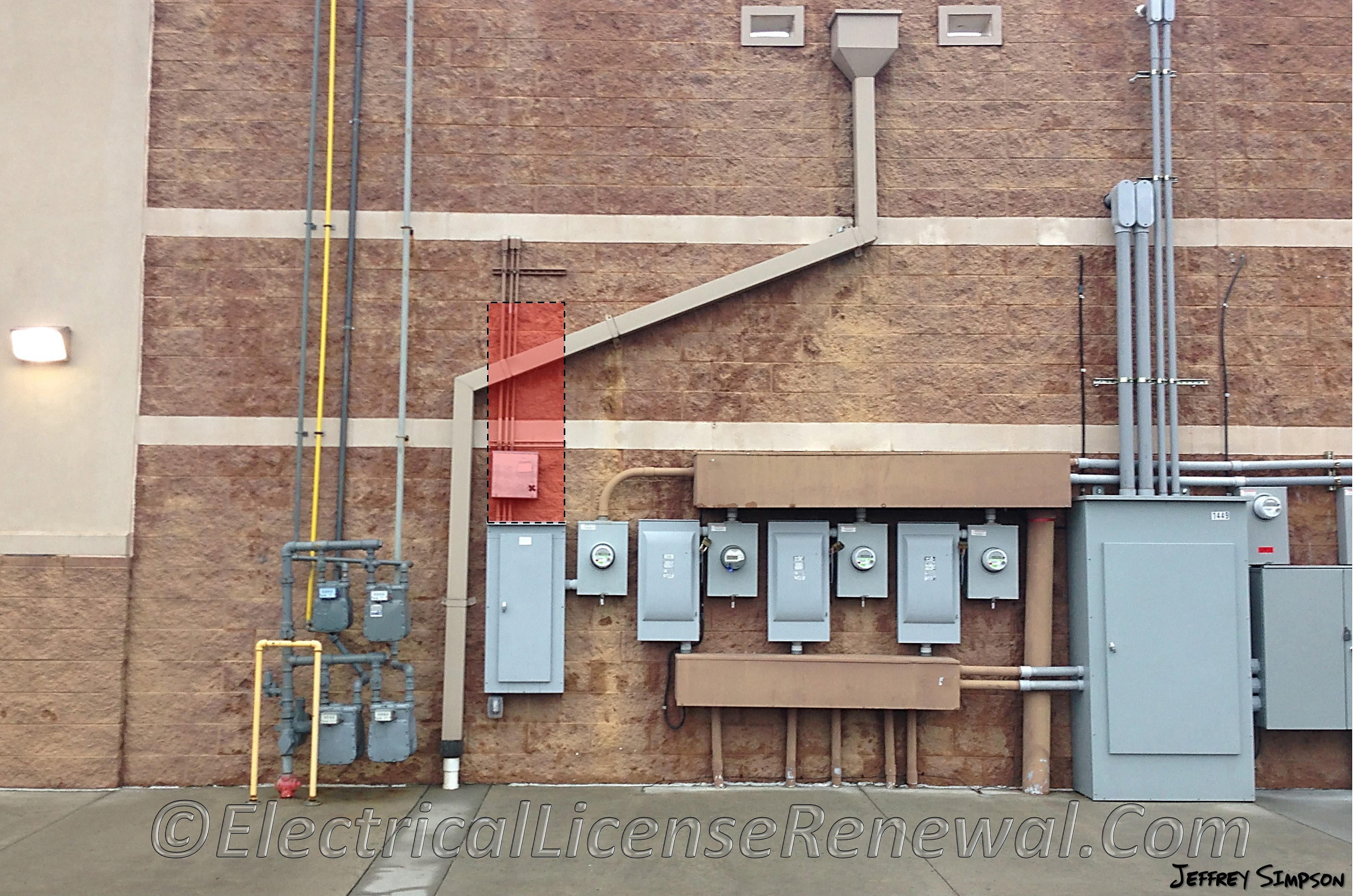



110 26 E 2 Dedicated Equipment Space Outdoors



2




Working Space For Electrical Equipment Iaei Magazine




Entrances To And From For Electrical Equipment Rooms And Pages 1 39 Flip Pdf Download Fliphtml5




Requirements For Electrical Installations Pdf Free Download




Analysis Of Changes 17 Nec Iaei Magazine



1



2
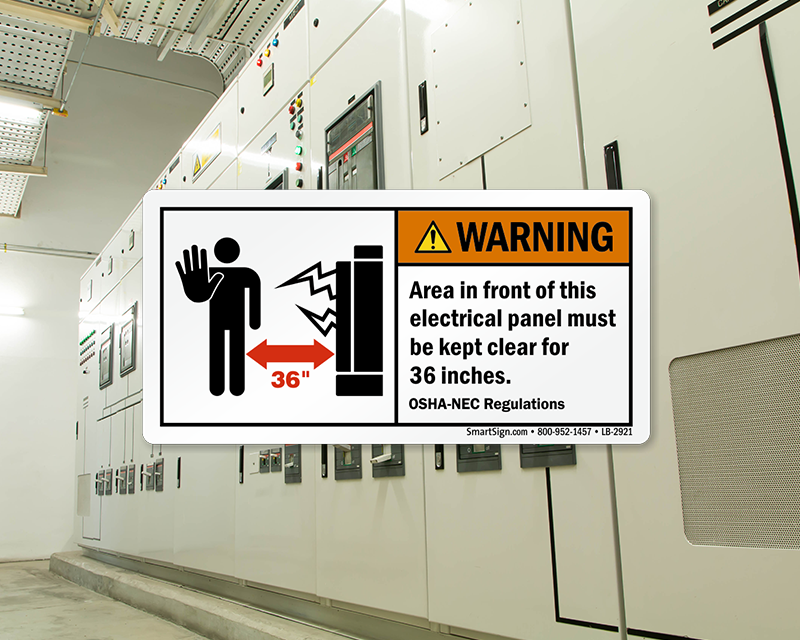



Minimum Clearance Around Electrical Panels Carrying 600 Volts Or Less Mysafetysign Blog




Working Space About Electrical Equipment Nec 14 110 26 23min sec Youtube



2



2




5 Nec Questions Based On The 14 Nec By Mike Holt Texas Electrical Excel




110 26c2 Spaces About Electrical Equipment 1 Engineer Educators Com



Working Clearance Electrician Talk




Working Space Requirements For Electrical Panelboards Iaei Magazine
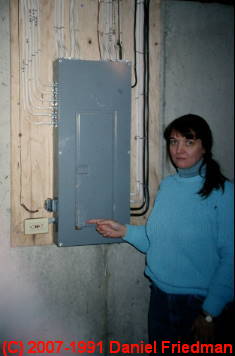



Electrical Panel Equipment Working Space Clearance Distances U S Nec Article 110 26
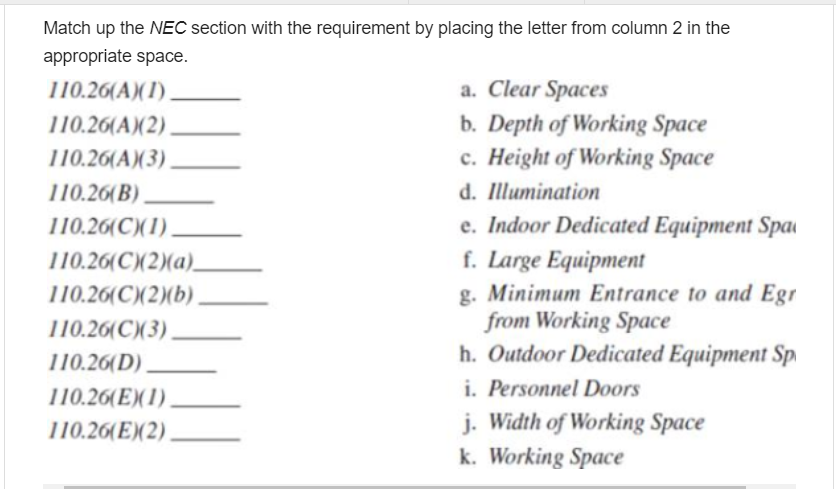



Solved Match Up The Nec Section With The Requirement By Chegg Com
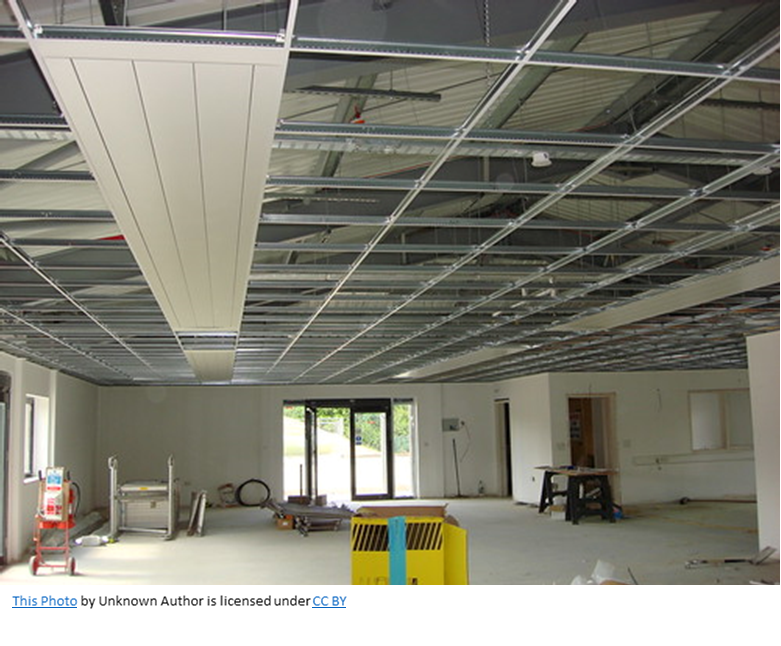



New Rules For Spaces With Limited Access Nec 17 110 26 A 4 Jade Learning



Seips Tech Tips Workspace Clearances For Solar Pv Systems Sei Professional Services




General Installation Requirements Part Xxxv Article 110 Electrical Contractor Magazine




5 4a Depth Of Working Space 110 26 A 1 And Table 110 26 A 1 Condition 3 Youtube



2




General Installation Requirements Part Xxi Electrical Contractor Magazine



Art109
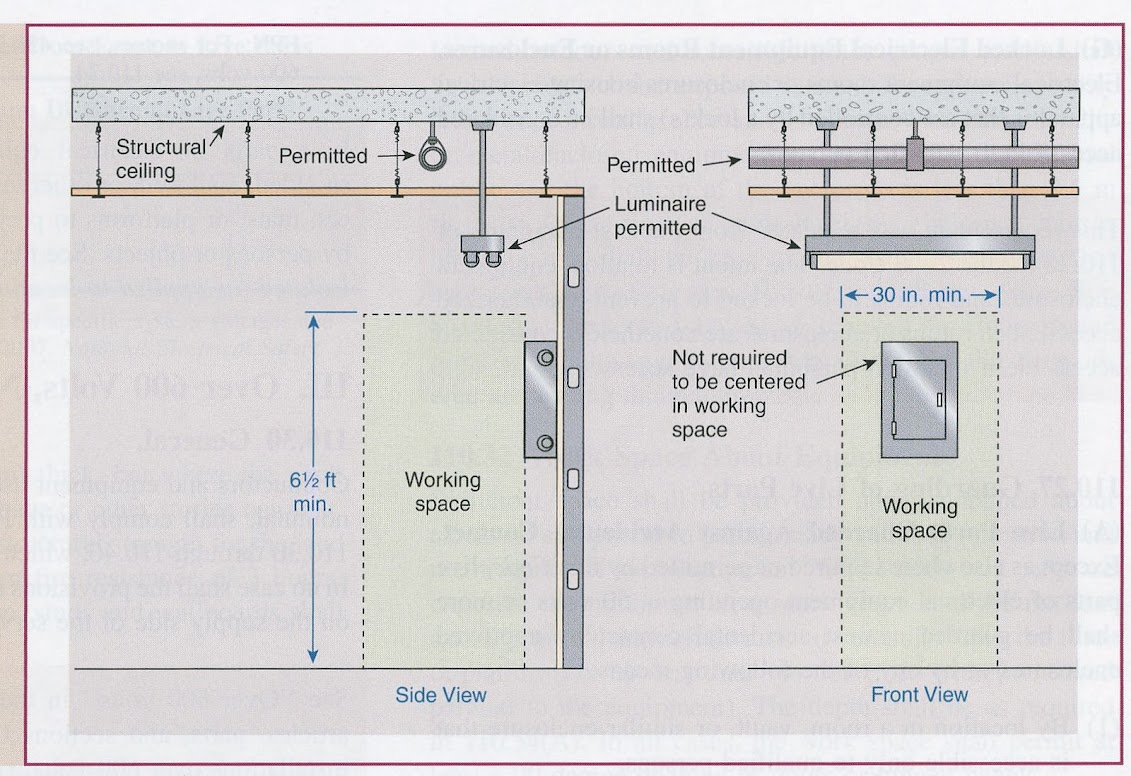



Inspectionnews Home Inspection




110 32 Workspace About Equipment
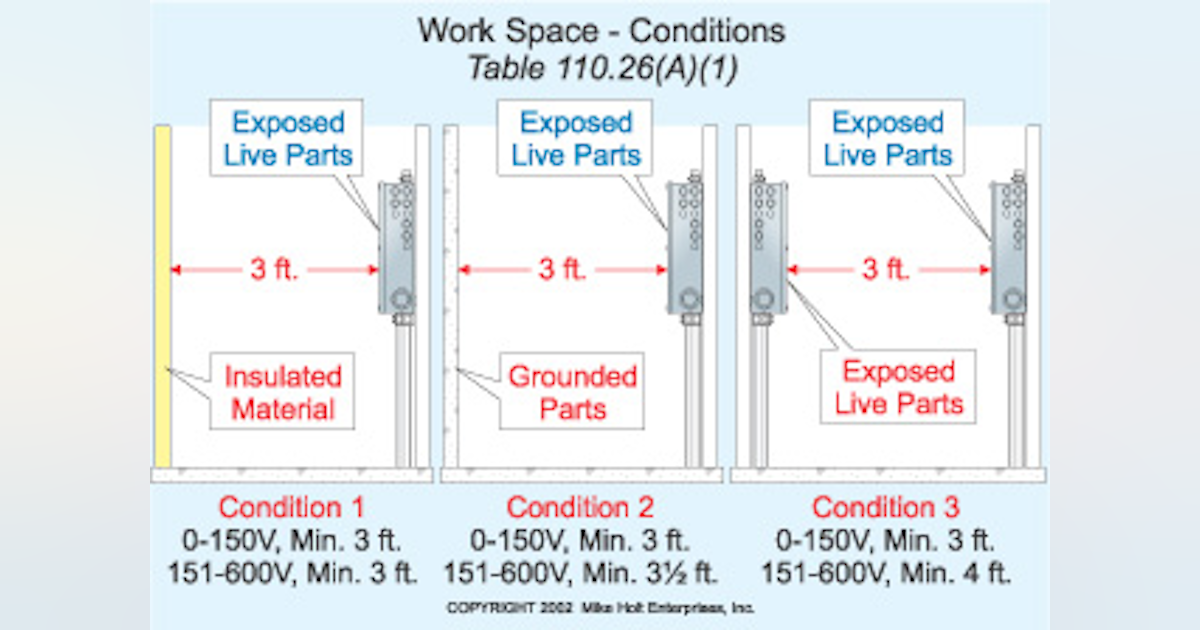



Adequate Workspace Keeps Electricians Safe Ec M




Working Space Requirements For Electrical Panelboards Iaei Magazine



Equipment Location And Clearances Upcodes




Required Labels On Electrical Panels Electrical Panel Area Must Be Clear Label 328l



0 件のコメント:
コメントを投稿